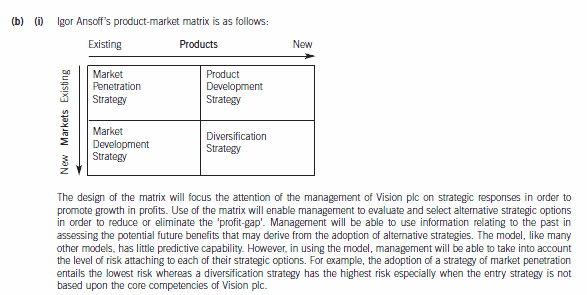香港考生:ACCA考试成绩有效期是多久?
发布时间:2020-01-10
当人生面对许多选择的时候,我们需要谨慎;当我们没有选择的时候,就把压力当挑战,给自己一个信心,近日,参加ACCA考试的小伙伴来咨询我一些关于ACCA考试成绩有效期的问题,接下来51题库考试学习网将一一为其解答,建议大家收藏起来哟~
ACCA F阶段(AB-FM)课程考试已正式取消考试期限,换句话说,已经考完的各F阶段科目的考试成绩永久有效,不必重新考试。
不过,对于ACCA核心课程(P阶段)的考试成绩还是设置了7年的有效期。每位学员必须在通过第一科战略课程之日起,7年内完成所有的P阶段科目考试。(超出规定年限就只能重新考试)
ACCA考完一般都需要多久?
ACCA每年有4次考季,每次最多可以报考4门,每年最多报考8门,而ACCA考试全科共需要通过13门考试,所以,全部都能一次通过考试的情况下,考完ACCA最快也要近两年的时间。
ACCA一般都能考多久呢?
以ACCA近年的考试通过率来看,在无免考的情况下,从F1-P阶段完成考试的时间大致是2年-3年的时间。当然,如果你有相应的免考机会,比如拥有CPA、MPAcc等证书的话则可以免除部分科目的考试。如此一来,就能大大缩短你通过考试的时间了。
ACCA免考政策如下:
教育部认可高校毕业生
1)会计学专业 - 获得学士或硕士学位(金融/财务管理/审计专业也享受等同会计学专业的免试政策,下同) 免试5门课程;(即是本科或者研究生毕业)
2)会计学 - 辅修专业 免试3门课程;(双学位的,且第二专业是会计的)
3)法律专业 免试1门课程;
4)商务及管理专业 免试1门课程;
5)MPAcc专业(获得MPAcc学位或完成MPAcc大纲规定的所有课程、只有论文待完成) 免试5门课程*;
6)MBA - 获得MBA学位 免试3门课程;
7)非相关专业 无免试课程。
*注:部分院校的MPAcc专业已专门申请ACCA总部的免试审核,因此有多于5门的免试,具体请查询 ACCA总部官网。
教育部认可高校在校生(本科)
1)会计学专业 - 完成第一学年课程 可以注册为ACCA正式学员 无免试;
2)会计学专业 - 完成第二学年课程 免试3门课程;
3)其他专业 - 在校生 ACCA全球网站查询。
中国注册会计师资格
1)CICPA - 2009年“6+1”制度前获得全科合格证或者会员资格证 免试5门课程;
2)CICPA - 2009年“6+1”制度后获得全科合格证或者会员资格证 免试9门课程;
3)FIA(Foundation in
Accountancy) 通过FIA(Foundation in Accountancy)所有考试并取得相关工作经验 免试4门课程。
关于ACCA有效期的介绍
ACCA考试期限跟CPA一样实行轮废制,即需要在一定的时间里面考完规定的科目,否则成绩将会无效。那么这个时间怎么算的呢?
根据以前的规则,学员必须在首次报名注册后10年内通过所有考试,否则将注销其学员资格。后特许公认会计师公会ACCA对学员通过ACCA资格认证所有考试的时限做出了重要调整。F段成绩永久有效,P段要在7年内考完。根据新规则,专业阶段考试的时限将为7年。因此,国际财会基础资格(Foundations in Accountancy,简称FIA)的考试以及ACCA资格考试的基础阶段F1-F9考试将不再有通过时限。
“7年政策”意味着从你通过P阶段的第一门科目开始,7年内需完成P阶段所要求的所有ACCA考试科目。否则,从第8年开始,你第1年所考过的P阶段科目成绩将会被视为过期作废,须重新考试。
以上就是关于ACCA考试的相关信息,51题库考试学习网想告诉大家的是,其实一个证书好不好考并不是绝对的,这取决于你自己的努力程度。俗话说,有志者事竟成,相信只要通过自己的不懈努力,通过看似很困难的ACCA考试也不是太大的问题。
下面小编为大家准备了 ACCA考试 的相关考题,供大家学习参考。
(b) Calculate the percentage of maximum capacity at which the zoo will break even during the year ending
30 November 2007. You should assume that 50% of the revenue from sales of ticket type ZC is attributable
to the zoo. (7 marks)

(b) (i) Explain how the use of Ansoff’s product-market matrix might assist the management of Vision plc to
reduce the profit-gap that is forecast to exist at 30 November 2009. (3 marks)

(b) Discuss the nature of the following issues in developing IFRSs for SMEs.
(i) The purpose of the standards and the type of entity to whom they should apply. (7 marks)
(b) There are several issues which need to be addressed when developing IFRSs for SMEs:
(i) The purpose of the standards and type of entity
The principal aim of the development of an accounting framework for SMEs is to provide a framework which generates
relevant, reliable and useful information. The standards should provide high quality and understandable accounting
standards suitable for SMEs globally. Additionally they should meet the needs set out in (a) above. For example reduce
the financial reporting burden for SMEs. It is unlikely that one of the objectives would be to provide information for
management or meet the needs of the tax authorities as these bodies will have specific requirements which would be
difficult to meet in an accounting standard. However, it is likely that the standards for SMEs will be a modified version
of the full IFRSs and not an independently developed set of standards in order that they are based on the same
conceptual framework and will allow easier transition to full IFRS if the SME grows or decides to become a publicly listed
entity.
It is important to define the type of entity for which the standards are intended. Companies who have issued shares to
the public would be expected to use full IFRS. The question arises as to whether SME standards should apply to all
unlisted entities or just those listed entities below a certain size threshold. The difficulty with size criteria is that it would
have to apply worldwide and it would be very difficult to specify such criteria. Additionally some unlisted companies, for
example public utilities, have a reporting obligation that is equivalent to that of a listed company and should follow full
IFRS.
The main characteristic which distinguishes SMEs from other entities is the degree of public accountability. Thus the
definition of what constitutes an SME could revolve around those entities that do not have public accountability.
Indicators of public accountability will have to be developed. For example, a listed company or companies holding assets
in a fiduciary capacity (bank), or a public utility, or an entity with economic significance in its country. Thus all entities
that do not have public accountability may be considered as potential users of IFRSs for SMEs.
Size may not be the best way to determine what is an SME. SMEs could be defined by reference to ownership and themanagement of the entity. SMEs are not necessarily just smaller versions of public companies.
声明:本文内容由互联网用户自发贡献自行上传,本网站不拥有所有权,未作人工编辑处理,也不承担相关法律责任。如果您发现有涉嫌版权的内容,欢迎发送邮件至:contact@51tk.com 进行举报,并提供相关证据,工作人员会在5个工作日内联系你,一经查实,本站将立刻删除涉嫌侵权内容。
- 2020-04-07
- 2020-04-28
- 2020-01-10
- 2020-03-03
- 2020-02-27
- 2020-01-10
- 2020-01-10
- 2020-03-08
- 2020-02-05
- 2020-03-25
- 2021-06-24
- 2019-12-28
- 2020-03-07
- 2020-01-09
- 2019-12-27
- 2020-01-10
- 2020-01-10
- 2020-01-10
- 2020-08-05
- 2020-01-10
- 2020-04-15
- 2020-05-09
- 2020-01-10
- 2019-03-16
- 2020-01-09
- 2020-01-10
- 2020-01-14
- 2020-05-15
- 2020-01-29
- 2020-04-22